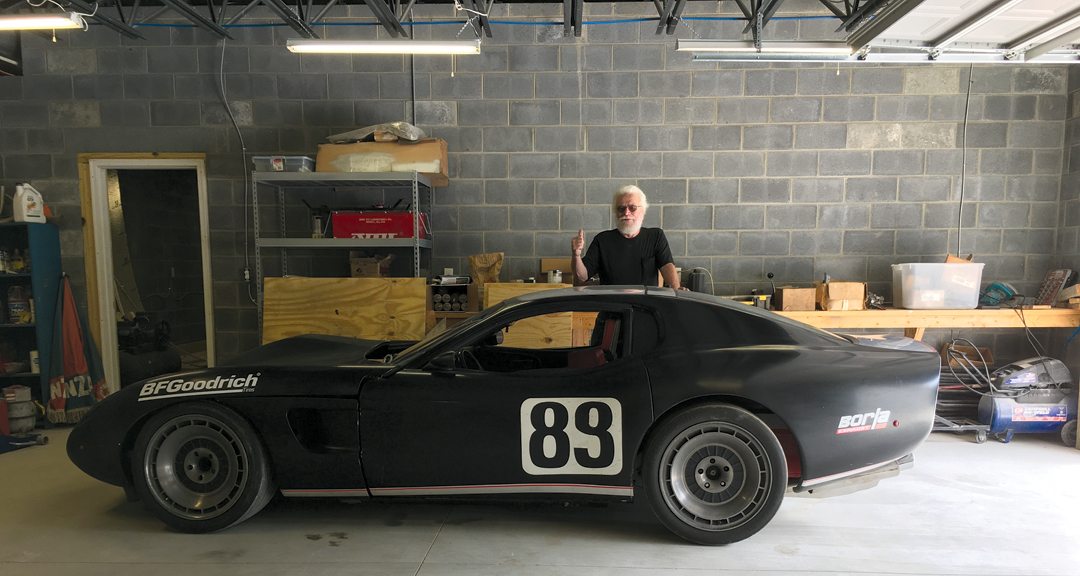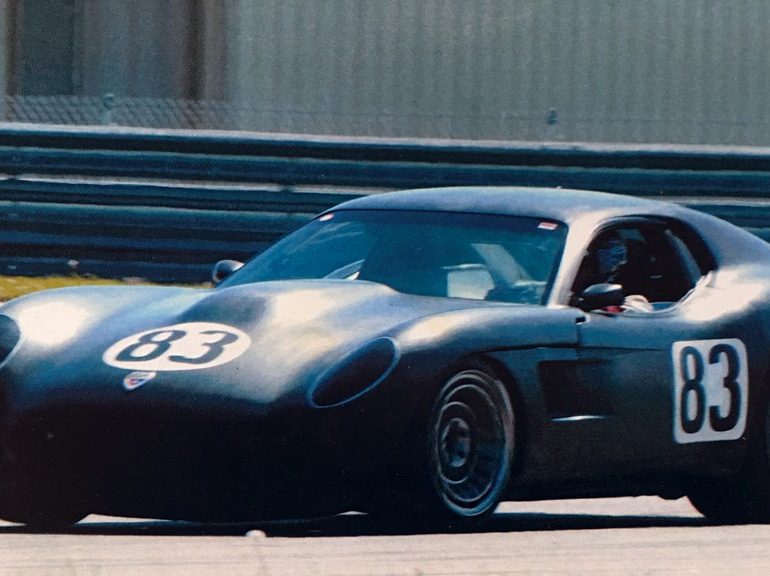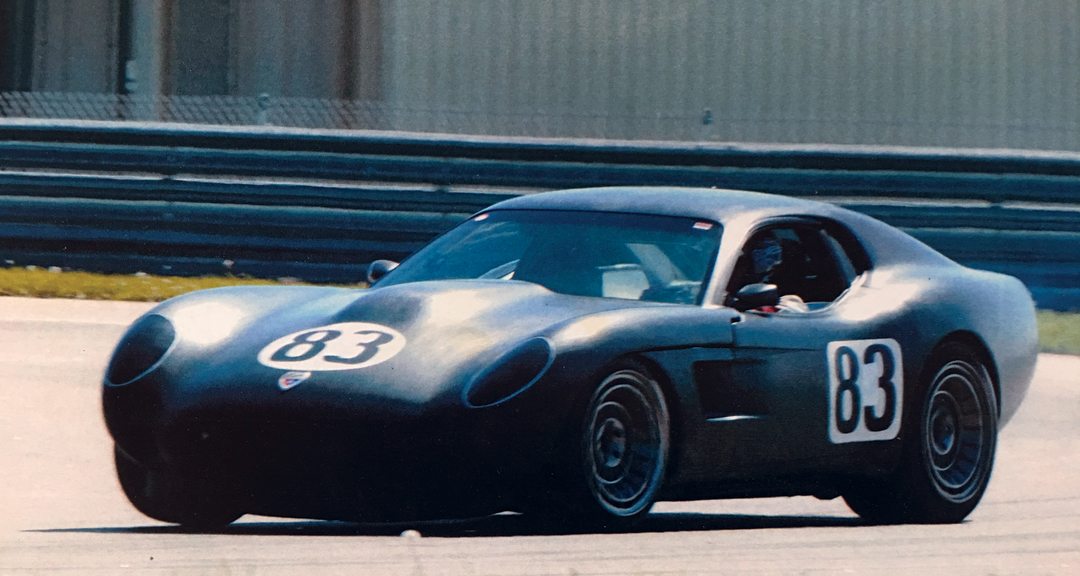The Contessa Track Car
What is this thing they call Contessa? The term Contessa originates from the Italian language and translates as “countess.” In the automotive world, when one mentions “Contessa,” depending on who is present, confusion may ensue.
Hino Motors of Japan built the Hino Contessa from 1961 to 1967. The car was offered in both coupe and sedan body styles—both in rear-engine, rear-wheel-drive configuration. The coupe design was inked by Giovanni Michelotti, and Peter Brock raced a lightweight version with astonishing success. Hindustan Motors of India produced its own Contessa from 1984 to 2002. Over the course of production, this luxury sedan was motivated by 1.5-, 1.8-, and 2-liter engines and was the vehicle of choice for many Indian government officials. Neither of these, however, are the Contessa of which I am speaking.
This month’s hidden Contessa was built by famed engineer Herb Adams, one-quarter of a century after he exited Pontiac. Adams’ Contessa was introduced in 1996 by his own Passion Motors. Unlike the Hino Contessa, which was nimble and sporty, and the Hindustan Contessa which was a transportation appliance, Adams’ Contessa was a swoopy, sporty rocket ship designed to be equally at home on highways and racing circuits.
Herb Adams was a central figure at Pontiac during the DeLorean, “We Build Excitement” heydays and, to a measureable extent, was responsible for a good deal of the Pontiac “hey”. Adams was born in Chicago in 1939. His father was a motorhead, and Herb exhibited design and mechanical aptitude at an early age. In 1957 he won a Fisher Body Craftsman’s Guild Model Car Competition for Styling and he used the prize money to attend the General Motors Institute. Adams said, “At that time you had to pick a career path, Styling or Engineering. That was a difficult decision for me because I enjoyed both aspects of the creation process equally. Ultimately, I chose the Engineering path, even though my Fisher Craftsman’s Guild Award was for Styling.”
Adams graduated with a four-year Bachelor of Science degree in Mechanical Engineering, in 1961. He served as a Pontiac Project Engineer from 1961 to 1965 at which time he moved to the GM Proving Grounds as a Senior Resident Engineer, where he worked on a clandestine fuel economy project code-named the “Old Brown Test Car.” Adams said, “We were able to increase highway fuel economy from the normal 12 mpg to over 20 mpg. This was done by optimizing existing parts and by inventing new ones. At the time, no one at GM or Pontiac took any notice, so our results were bypassed. It’s really too bad because if the brass at GM knew about them they would not have cancelled the full-size cars for fuel economy reasons in the 1980s. The full-size cars were the big-profit vehicles for each GM division, so the total financial impact was enormous; to a great extent the result of not knowing what we’d accomplished with the Old Brown Test Car.” While at the Proving Grounds, Adams also designed and demonstrated the performance advantages of a functional hood scoop; particularly important for the GTO’s performance.
The following year Adams moved to the Pontiac Advanced Design Center as a Senior Project Engineer. In 1967, he designed a three-passenger automobile with an ultra-lightweight X-4 engine. Adams says the engine and car were fantastic, but the project was killed due to corporate politics. In 1969, Adams and Jeff Young designed a 250-cid SOHC six-cylinder that produced 320 horsepower. Adams describes this as another huge missed opportunity for Pontiac.
But 1969 would be anything but disappointment for Adams. For it was in this year that he developed the running platform for the Firebird Trans Am. Many automotive historians have described Adams as the “Father of the Trans Am” because he had a hand and voice in nearly all aspects of the project…including the iconic Trans Am stripes (which was 100 percent his design). In ’69, Adams also built the GTO Judge Prototype, and even selected the orange paint color scheme. Adams said, “Initially the Judge was proposed as a low-cost GTO that had performance at a reasonable price. The marketing guys instead made it into a circus wagon. We engineers didn’t like it, but history had shown they were right. Today, the Judge is often used as an example of what muscle cars were all about. There were much faster cars at the time, but I think the Judge’s appeal is because it was an identifiable package.”
By 1971, Adams was a Group Leader at the Pontiac Special Projects Division. During this time he oversaw the development of the soon-to-be-released 455 Super Duty engine. By ’73, however, Adams says he’d had enough with corporate red tape and he resigned from Pontiac to pursue other automotive dreams. Adams said, “I left Pontiac in 1973 because the new Pontiac management was not interested in performance and advanced concepts. They made it very clear that we DeLorean guys were not welcome anymore.”
Whereas many “Big Three” engineers slip into oblivion when they leave the comfort of a mega-corporation, Adams’ career continued with distinction. He formed VSE (Very Special Equipment) and in 1976 offered the Pontiac Fire Am track package, which was heralded by the press and enthusiasts worldwide. The following year he unveiled the famed Cheverra. In 1982, he designed and built a new chassis with IRS for Steve Blake who had taken over Avanti; unfortunately this Avanti never made it into production.
In the 1990s, Adams designed and built a series of 25 JackRabbit Speedsters based on the FWD Volkswagen Rabbit. Sporting 170 ponies and weighing just 1,500 pounds, the JackRabbit was a screamer with roadholding to match. The JackRabbit also frequently finished in the top five at annual kit car shootout events. During this time, Adams and his son also produced approximately 26 VSE Cobras, which won numerous awards for superior construction. In the late 1990s, Adams designed and built “The Blitz” one-off.
Space does not permit a full account of the more-than 75 cars that Adams designed and built during his career, but some highlights include the: 1965 Pontiac Vivant, 1974 Electric Riding Suitcase Motorcycle, 1977 Adams Go Kart, 1978 Passion Car, 1990 Tango Electric Car, and the 2000 Flying Floating Motorcycle.
No discussion of Adams’ career would be complete without mention of his racing efforts. From ’62 to ’66 he built a series of D Sports Racers that he describes as “reasonably competitive.” In 1969, at the direction of Pontiac, Adams built the race engine for Jerry Titus’ Trans-Am racecar. In 1970, Adams constructed and campaigned the legendary “Gray Ghost” Tempest that shocked the racing world. Few recall that this Tempest actually started life as their family daily driver. In 1972, Adams was at the helm of Milt Milner’s Firebird Trans-Am team that won at Mid-Ohio. The following year he raced NASCAR with Jerry Thompson in a Pontiac Grand Am. In ’77 Adams brought a 455 Super Duty Fire Am to the 24 Hours of Daytona; running 10th at 20 Hours, the car DNF due to a failed crankshaft. From ’79 to ’82 he raced the Silverbird and Silverbird Junior in Trans-Am. In ’81, the Cheverra appeared at the 24 Hours of Daytona and was also a Hot Rod Magazine cover car. In ’82 Adams’ Avanti Race Car was driven to a 3rd at Mid-Ohio with Gene Felton behind the wheel. Other notable racing projects were: a 1982 IMSA Oldsmobile Starfire, a 1983 Oldsmobile Cutlass, a 1984 IMSA Oldsmobile Hunchback and the Escort-sponsored 1987 “Pontoon” car and a 1988 IMSA GTP car.
Which brings us to Passion Motors Contessa; a car that showcases more than 50 years of Adams’ accumulated knowledge and expertise. The Contessa project began with an all-new steel backbone chassis with a wheelbase of 95 inches. Suspension was totally designed and developed by Adams, and was independent front and rear. Adams literally wrote the book on chassis design (Chassis Engineering [1992]) and says the suspension on the Contessa is totally optimized, the result of half a century of refinement. The brakes are Brembo disc units at all four corners. The sleek coupe body is constructed of fiberglass and was also totally designed by Adams. He said, “The rear wheel arches and rear end were styled after the beauty of the female shape, instead of bulls and horses. On the Contessa I was looking to design something with classic grand touring styling but with cutting edge modern mechanicals and conveniences like air conditioning and power windows. I was also shooting for absolute reliability.”
To date, Adams has built seven Contessas with the very first being the factory “works” Track Car. This car was equipped with a heavy-duty Chevrolet M-22 4-speed and a 427-cid V8 Chevrolet LS-7 engine that pumps out 650 horsepower. Weighing in at just 2,700 ponds and with genius handling and monster road holding, the Contessa is a dual weapon for street and track use.
In the second half of the ’90s, Adams says he and his son Matt took their Contessa to several events, including timed lapping and autocross. Adams says the car was incredible on the track and he does not recall it ever being beaten.
The “works” Contessa has not turned a wheel in competition for more than a decade now, and has been cloistered away in Adams’ home garage. I have had the pleasure of going for a ride in this car and its performance is nothing short of astounding. It seems that Contessa can be rear-engined, Japanese and zippy. It can also be Indian, stately and boring. But oh, that American Contessa. She may look like a countess. But she goes like the devil.

Do you know of a Hidden Treasure? If so, send your photos and stories to Mark at [email protected]





